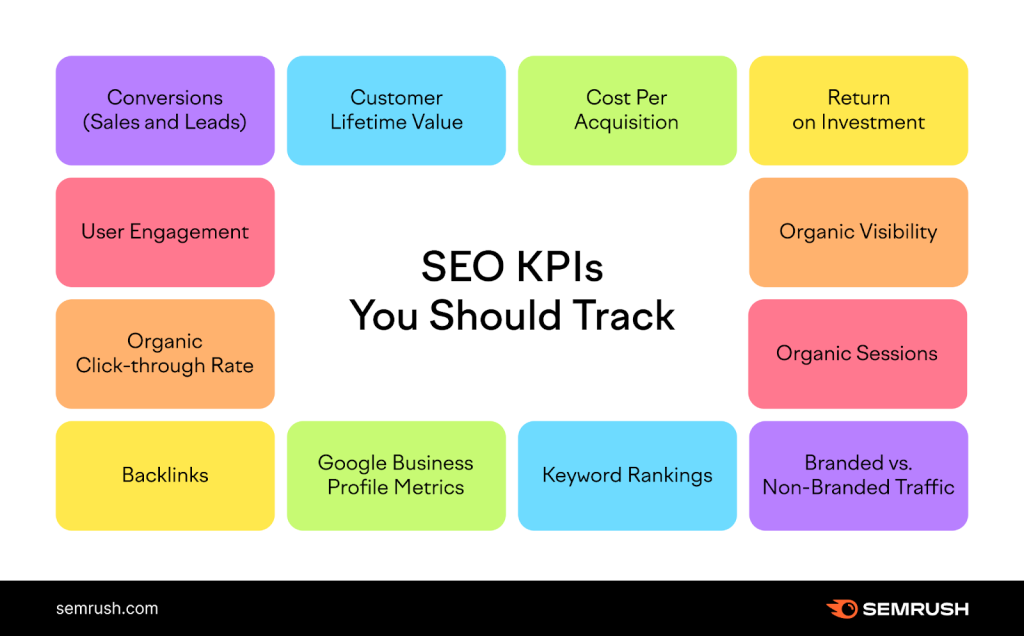Balancing a few content distribution goals has become quite a challenge for marketers. Many have to juggle different goals due to the use of multiple platforms, the variety of audiences they cater to, the emergence of new social media, and many other reasons. After all, a winning marketing strategy is one that combines several approaches and methods. Still, having multiple content distribution goals demands a lot of time and resources. In our guide, we explore exactly how you can achieve the sought-after balance.
What is Content Distribution?
Content distribution is a process of sharing content on various platforms and through different channels, such as social media, newsletters, ads, banners, etc. Content distribution allows brands to reach a wider audience and promote their product, increasing their consumer base. There are three types of channels for content distribution:
Owned
These are your brand’s channels that you can use at any time and have complete control over. Some examples of owned channels include blog posts, social media, websites, webinars, white papers, podcasts, etc.
Earned
This is the type of channel that your brand can’t control in any way. It often comes through collaborations and features, such as guest posts, mentions, backlinks, and others.
Paid
When you pay to promote your products, you use a paid channel for content distribution. Paid channels include social media posts, influence marketing, sponsored content, etc.
A combination of all types of channels can help your brand balance content distribution goals and reach the widest possible audience. Using only one or two channels limits your capabilities and may not yield the desired results while utilizing all three enables you to explore more options and find better ways to promote your products.
Importance of Content Distribution Goals
Having multiple content distribution goals can have multiple benefits. Here is why it is important to find the right balance when it comes to creating and publishing content:
Lead generation
By creating personalized content and offering valuable information to your potential customers at each stage of a customer journey, you increase the likelihood of them becoming your actual clients. Thanks to an effective content distribution strategy, you can nurture leads and get closer to converting them into loyal customers.
Brand awareness
A successful content distribution strategy is one that covers many different distribution channels and reaches a broader audience. You can establish a strong brand presence across various platforms by consistently using the same content distribution channels.
Improved trust in your brand
On behalf of the brand, do your best to provide valuable insights, discuss industry trends, and keep your audience engaged. Eventually, your visitors will start seeing you as someone they can trust. And if you aim to make your content more educational, you help your audience by solving different problems and answering various questions, which contributes to building trust.
Better SEO
Effective multichannel marketing can enhance search visibility and drive organic traffic, resulting in increased website visits and higher rankings on search engine results pages (SERPs).
Data-driven decisions
By analyzing various metrics such as click-through rates or engagement, you can see how efficient your content distribution strategy is and gain insights into which content formats work best for your audience.
There are many reasons why having multiple content distribution goals is good for your business. The best part is that you don’t have to allocate many resources to achieve them, since many methods and content distribution channels like social media or self-service marketing platforms allow you to achieve your goals without overspending.

What is Content Marketing? | Become a Content Marketing Ninja
TOP Content Distribution Channels to Check Out
Your multi-goal content strategy will probably include at least a few content distribution channels that are pretty different from each other. Knowing the effectiveness and importance of each content distribution channel is what can help you balance multiple content distribution goals, so here is a list of key distribution channels to consider integrating into your marketing strategy:
Short-Form Videos
The attention span of an average social media user is decreasing, which presents marketers with another challenge: How can you interest someone in your offerings when you only have a few seconds? Short-form videos are your answer. Platforms like TikTok are rapidly gaining popularity, and every business should use this opportunity to attract more customers. 57% of GenZ and 42% of Millenials prefer short-form videos over other types of videos to learn about products, and these numbers keep growing. Now is the best time to leverage short videos to connect with the audience and increase your outreach.
Social Media
Social media platforms have a lot to offer. An average user spends 2 hours and 24 minutes on social media. With the proper approach, you can quickly grow your audience on websites like Facebook, TikTok, Instagram, LinkedIn, and others. The best part about social media is that it is extremely flexible, and you can create and distribute different types of content using the same platforms.
Email Marketing
Some say that email is not a good modern-day channel for content distribution, while others argue that it might still be one of the best ways to reach out to a wider audience and increase brand awareness. 87% of brands state that email marketing is crucial for business success. Thanks to the flexibility of email marketing, you can use it to distribute literally any type of content, such as articles from your website, promotions of new services or products, landing pages, announcements of events, and other valuable content.
Sponsored Content
Who would you trust more: someone whose content you regularly watch and enjoy, or an advertisement that popped up while searching for something? For most internet users, the former choice would be their preference, which is why sponsored content is currently one of the most popular ways to promote a product.
Content that a brand shares through a media person, like an influencer, celebrity, publisher, etc., is called sponsored content. 82% of brands report achieving higher quality results from influencer marketing campaigns. By working with influencers and bloggers whose audience is similar to yours, you can increase brand awareness and reach a wider audience while building trust with your customers.
Blog Posts
Blogging remains one of the most popular content formats, with 9 out of 10 marketers using their blogs to accomplish their content objectives. Blog posts are a powerful way to generate leads and attract more visitors to your website. Moreover, blogging allows you to find the right brand voice and make your company stand out. Visitors who come to your site might want to learn more about what you offer, your expertise, and why they should choose you. A blog is the best place to elaborate on that, create content that’s useful for your clients, and spread the word about your brand.
Podcasts
Creating a podcast doesn’t require as much time as needed for recording and publishing a video, but it holds just as much power as video content. In our fast-paced world, finding time to watch videos or read books is often hard. Podcasts are a great solution to this problem, allowing everyone to learn more about the topic they’re interested in on the go, which makes podcasts one of the best channels for content distribution. Looking for a way to build a loyal audience? Or perhaps you’d like to raise awareness about your brand and draw in new customers? Look no further than podcasts. The use of podcasts by a brand can increase its awareness by an impressive 89%, which can be a life-changer for many companies.
How to Balance Multiple Content Distribution Goals: A Few Steps
Finding the right balance is a challenging task, but there are a few steps you can take to make this journey much easier. Here is what you can do to balance multiple content distribution goals and streamline content delivery:
Step 1: Establish Your Objectives for Content Distribution
Start by asking an important question: What would you like to achieve by distributing your content? Different business objectives require different approaches. If you would like to increase brand awareness, you might want to consider working with influencers and sharing your content on various social media platforms. On the other hand, if your goal is to drive traffic, the best way to achieve that would be through blog posts and SEO optimization.
Step 2: Recognize Your Intended Audience
Now that you know your goals for content distribution, it is time to determine who your audience is. It’s impossible to cater to the needs of all people, meaning that your task at this point is to understand who might be interested in your content and how it is best to deliver it to them. Segment your audience into different groups based on the age, occupation, income, etc. This will help you create content tailored to a specific audience.
Step 3: Set realistic key performance indicators (KPIs)
Your KPIs should align with the goals you’ve previously established. By measuring the results of your content distribution strategy, you will see what works and what doesn’t. But how can you make sure that you choose the right metrics? Everything depends on your goals.
If your objective is to generate leads, the most suitable metrics could be conversion rate, cost per lead (CPL), or lead quality. If your priority is to engage the already existing customers, the appropriate KPIs might be customer retention rate, customer lifetime value, or collected feedback. Track metrics that are well-adjusted to your objectives, and keep all content distribution goals in mind when determining key performance indicators.

SEO KPIs: 12 KPIs for SEO to Track & Measure
Step 4: Leverage the modular approach
No matter what type of content channel you choose to work with, there will likely be a need to create many pieces of content, a task you or your team might be able to handle efficiently. Moreover, it’s possible that you will end up choosing at least a few content channels, which makes it even harder to create enough content for distribution. Instead of always trying to create something new for each channel, you can break down your content into blocks or modules that can be repurposed and reused multiple times.
Step 5: Automate
Why do everything yourself when you can leverage the power of automation tools? For example, schedule and publish content to different channels automatically using different platforms or content management systems.
There are many other ways to integrate automation into your workflows, ranging from chatbot implementation to orchestrating automated email marketing campaigns. Let automation handle some of the many tasks, focusing on more strategic goals and higher-level objectives.
Closing Thoughts
According to a report by Adobe, 59% of consumers state that engaging content increases their likelihood of making a purchase. However, creating such content, finding the right channel for it, and making sure that the target audience sees it is a huge challenge for many marketers. For your multi-content strategy to be successful, take some time to research different content formats, find appropriate social media channels, create high-quality images, and polish the existing content. It is definitely hard to balance multiple content distribution goals, but once you learn what works best for the brand, you will achieve incredible results in no time.
